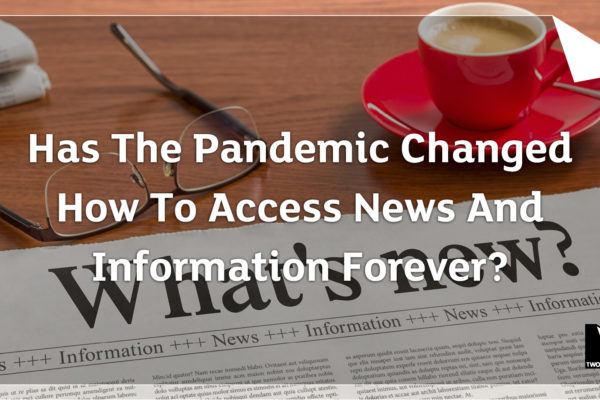UK study: online news-reading increases and print remains strong
A new study has found that 51 per cent of UK consumers intend to read more news online in the future, up from 40 per cent in 2019, after a year in which that was often the only option. As we have reported here, however, print remains an important channel, and 43 per cent of UK respondents would be concerned if printed news were to disappear.
Conducted by the not-for-profit organisation Two Sides and independent research company Toluna, the study aims to understand changing consumer perceptions towards print and paper.
Consumers must be given the right to decide how they access news and information
Consumers are no longer picking up a newspaper on their daily commute, or holidaymakers able to indulge in their favourite magazine mid-flight. Newsstands and freesheets have closed or lost their usual traffic. Facing this challenge, traditional news brands have successfully developed and improved their digital platforms and, for many, online has become the default reading option – although, not necessarily out of choice.
Print and digital are often compared in a bid to decide which is best. However, the debate shouldn’t centre around “print vs. digital”, as both channels are important and complement each other. Ultimately, consumers must be given the right to decide how they would like to access news and information; ensuring that consumer choice is maintained and those unwilling or unable to access digital information are not disadvantaged.
In the UK, 4.5 million adults have never used the internet, according to the Office of National Statistics (2018). It is often the most vulnerable members of society who depend on traditional printed newspapers, magazines, books and bills and statements. The move to an online-only society risks leaving older people, the disabled, rural dwellers and those on low incomes disconnected.
Furthermore, moving online is not universally welcomed. Some 33 per cent of all UK respondents and 54 per cent of over-65s prefer to read their newspapers in print, while 37 per cent prefer to read magazines and 50 per cent books in print. However, younger generations generally opt for digital devices.
Growing dependence on digital brings its own challenges. The survey reveals that getting away from digital devices is more important than ever, with 45 per cent of UK consumers now concerned about how digital devices may be damaging their health and 43 per cent agreeing they spend too much time on their devices.
There are benefits to reading in print too. Reading in print allows us to process and comprehend the information we are reading better, with 37 per cent of UK respondents agreeing that they get a better understanding of a story when they read in print.
Considering our impact on the environment
Regardless of print or digital, there is one common factor at play that is at the top of consumer minds: the impact on our environment.
Seventy-four per cent of UK consumers agree that it is important to use paper products from sustainably managed forests. Within Europe, the raw material sourced to produce paper follows strict legal requirements, with 74 per cent of wood and 90 per cent of pulp purchased by the European pulp and paper industry being certified by accreditation schemes like FSC® and PEFC™ (Cepi, 2018). In fact, the area of European forests has been growing by over 1,500 football pitches every day over the last 15 years (FAO, 2005 – 2020).
Of those surveyed, 66 per cent think electronic communication is more environmentally friendly than paper communication. However, paper and print products are among the lowest greenhouse gas emitters at 0.8 per cent, whereas the ICT industry accounts for 2.5-3 per cent of global greenhouse gas emissions (Belkhir L & Elmeligi A, 2018).
The survey found that just 17 per cent of UK consumers believe the paper recycling rate exceeds 60 per cent. Furthermore, 46 per cent believe that paper and paper packaging is wasteful. In reality, Europe’s paper recycling rate is currently 72 per cent, with paper packaging even higher at 84 per cent (Cepi, 2019).










